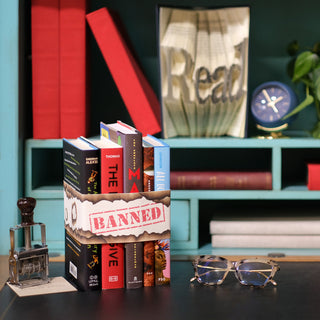Banning or protesting certain books is far from a new practice in America, but lately, outraging against certain literature has become a common thread among some political groups. People say they don’t want certain books on curriculums or at school libraries because they want to control what their kids can read. What they don’t realize is that, just because you don’t want your children reading something, that doesn’t mean we should take that away from other kids. Books aren’t dangerous, but banning them is.
Historically, in about every example available, book banning has been linked to the slowing of social progress. Interrupting learning, speech, and access to information is an act of oppression and a tool of social control. “Attempts to ban books are accelerating across the country at a rate never seen since tracking began more than 20 years ago, according to a new report from the American Library Association,” —New York Times
With 3 months still remaining in 2022, this year has already reached a 21st-century censorship record. 1,651 books have been banned or targeted for banning so far. This smashes last year’s record, which saw the most U.S. bans since the ‘80s.
So, this Banned Book Week, we want to highlight our selections for our Contemporary Banned Book set that have been targeted over the last two years and why we must read on in protest.
The Absolutely True Diary of a Part-Time Indian - Sherman Alexie
This one is one of many where those that want it removed from schools can’t come to a consensus on why. Some say the PG-13 content and use of foul language are too mature for 10th graders to have in their English Literature curriculum. In reality, the book is a reflection of the author’s own experiences of being the only Native teenager at a white school. It’s an important read, for teens and adults alike, because it provides perspectives on reservation life, racism, disability, and coming of age under these circumstances that we otherwise might never consider.
The Hate U Give - Angie Thomas
Recently adapted into a movie with similar protests, The Hate You Give is officially banned from schools for ‘profane language,’ but we know that isn’t the real issue. Thomas tells the story of a young black girl from a poor neighborhood who goes to a mostly white prep school and dealing with the loss of her best friend after he was unjustly targeted and killed by police. It’s uncomfortable for a white audience, but that is how we learn. Racial profiling and police brutality against minorities isn’t a new issue, either, and avoiding the conversation isn’t going to make it go away. The actual content is considered acceptable for readers as young as 10 so long as a parent is prepared to have an open and honest conversation about the applications of the events in the book to real-life issues.
Maus - Art Spiegelman
The heaviest of this collection and the only graphic novel tells a holocaust survival story in a more acceptable format: the Jewish people are mice, the Nazis are cats, and are helped by other animals like Pigs and Dogs, which likely stand in for Germany’s allies during WWII. It’s banned so often because it does show the true horror of systemic genocide. There is gore, violence, foul language, etc, but these are all things that were true for the people who lived it. You can’t censor history. More than ever, it is important to remember what can happen when strong discrimination and political extremism combine. We can never let it happen again. A must-read for anyone who needs a refresher on why.
Speak - Laurie Halse Anderson
Speak is particularly controversial, as there are just as many advocates for requiring it before high school as there are people who want access revoked for minors entirely. The reason is clear: the main character gets sexually assaulted at a party. It isn’t very graphic at all; how clear it was is apparent without gruesome content. She spends the whole of her 8th-grade year silently struggling to cope, as she doesn’t feel like she can tell anyone. This book is essential for middle schoolers because it teaches them what sexual assault can look like and how to speak up about it, which is crucial as they move on to high school and socialize with much older students. For readers of all ages, the message stays the same, and we leave feeling seen, heard, or developing sympathy for other victims of assault.
All Boys Aren’t Blue - George M. Johnson
Along similar grounds as Speak and The Hate U Give comes to the ban of Johnson’s YA memoir. Ultimately a story about coming out as LGBTQ+ and finding your identity, critics slam it as being ‘criminally sexual,’ despite avoiding graphic description. Besides, sexual content is relevant to his story of surviving abuse and going on to become comfortable with his sexual identity. While more suited to a high-school audience, this is another story that lets readers know what sexual abuse can look like so they know how to advocate for themselves. On a brighter side than that, it tells teens questioning their identity that it's okay and they aren’t broken. What’s the problem with that?







